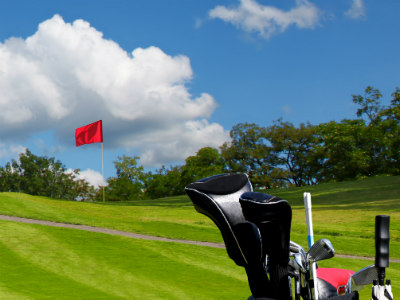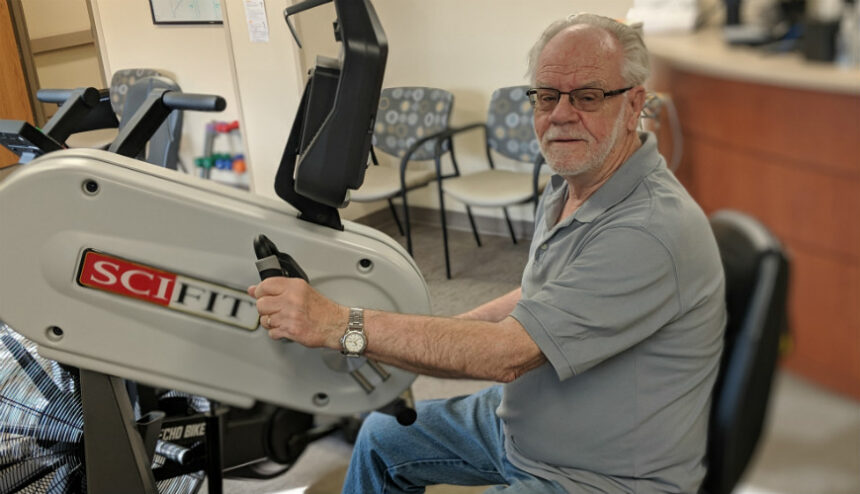Hanley is extremely grateful for everyone who helped save his life and cared for him; he appreciates the second chance. His stubbornness transformed into a passion for improving his health so he can be here for his wife, family, and friends.
A heavy smoker for 59 years, he gave it up – because they wouldn’t let him smoke in the hospital, he jokes. He figured he had gone without a cigarette for nine days so he could kick it. And the fact that after open heart surgery and a collapsed lung, it hurt to cough, he convinced himself that it wasn’t worth it.
Anxious about Cardiac Rehab Phase 2 – but worth it
Just eight days after going home, Hanley began Cardiac Rehab Phase 2 at Glacial Ridge Hospital. Instead of walking around in their home unmonitored and scared, rehab patients get reassurance and encouragement. Three days a week, a specially trained cardiac rehab nurse connects patients to a heart monitor prior to walking on the treadmill. Each time, an RN examines their incision to see how it is healing, monitors their new medications, and checks their weight and vitals. They watch for signs of depression, anxiety and stress too – common psychological factors many patients experience.
“Anyone starting cardiac rehab is anxious. You’re weak and you’re still hurting, you haven’t done much since your heart attack or surgery, but you have a second chance. With every step the first few times, I was worried that I may cough and break a stitch inside or cause other damage.”
Knowing the care he had always received at Glacial Ridge and then meeting his nurses, Hanley reminded himself that they knew what they are doing – he was safe. Each day got a little easier and he could walk a little farther and do a little more at rehab.
After a minimum of four weeks in Phase 2, if patients are able, they can begin using equipment that exercises their upper body as well as improving their cardiovascular strength. Phase 2 Cardiac Rehab can be up to 36 sessions (3 days a week for 12 weeks) and the number of sessions depends on each individuals’ goals and health condition.
Continuing with Phase 3 Cardiac Rehab
Once he completed Phase 2, Hanley moved on to Phase 3 Cardiac Rehab. Rather than start this phase at a wellness center, it was more comfortable knowing the RNs are still there if something were to happen. In Phase 3, Hanley still exercises three days a week at the hospital, but he’s not connected to medical equipment. The RNs check his blood pressure and oxygen level after he’s done exercising so he’s reassured that his heart is fine.
Even now, there are days when Hanley says he doesn’t want to get out of his recliner and has to tell himself to, “get out of that chair and go!” Afterward, he feels rejuvenated. In both phases of cardiac rehab, there are a few other individuals there with you so that can be encouraging.
When Hanley went back after missing a week of rehab with the flu, it was harder than it used to be. He realized that even missing a week would set him back so he sticks to the plan.
Doing more post-heart attack than he did 6 years ago
 Hanley was back to golfing several days a week with his buddies and working around the home. Just seven months after his triple bypass surgery, he went pheasant hunting on the opener! Surprising himself and everyone in his group, he was able to walk through the tall grass, going up and down hills along with them. Hanley hadn’t done that for at least six years because he never felt up to it, physically.
Hanley was back to golfing several days a week with his buddies and working around the home. Just seven months after his triple bypass surgery, he went pheasant hunting on the opener! Surprising himself and everyone in his group, he was able to walk through the tall grass, going up and down hills along with them. Hanley hadn’t done that for at least six years because he never felt up to it, physically.
Keep going!
Whenever Hanley meets someone new to cardiac rehab, he can relate to what they are going through – the anxiousness, the caution, the not wanting to come back – and recognizes that he could help get them through that tough day. It was his wife and the cardiac rehab RNs who kept him going – one day at a time.
His mantra may help others show up for their rehab and stick with it: “Get out of that chair and go; not everyone gets a second chance!”
Glacial Ridge Hospital is here for you. Learn more about Cardiac Rehabilitation from the American Association of Cardiovascular and Pulmonary Rehabilitation – who needs it and how it helps.


